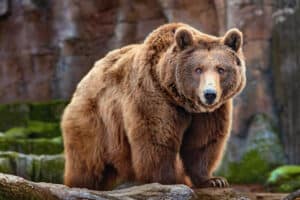The giant panda, Ailuropoda melanoleuca, lives only in the bamboo forests of central China. These bears adapted millions of years ago to eat primarily bamboo. Despite having developed some physiological adaptations for eating bamboo, giant pandas do not have digestive systems that efficiently process this food. They consume huge amounts of bamboo every day just to survive. Read on to discover why giant pandas just can’t get enough bamboo.
Giant Pandas Need Huge Amounts of Bamboo for Nutrients

The
giant panda
consumes roughly 25 to 35 pounds of bamboo each day.
©iStock.com/wrangel
Adult giant pandas consume approximately 25 to 35 pounds of bamboo every day. They spend approximately 12 hours a day eating bamboo. They spend most of the rest of their time sleeping. Approximately 99 percent of a giant panda’s diet consists of bamboo. Bamboo supplies the nutrients that giant pandas need, including carbohydrates, fiber, protein, vitamins and minerals. But in order to get enough of these nutrients, particularly the vital amino acids to build proteins, pandas must consume huge amounts of the plants.
Different Types of Bamboo Have Different Nutrients
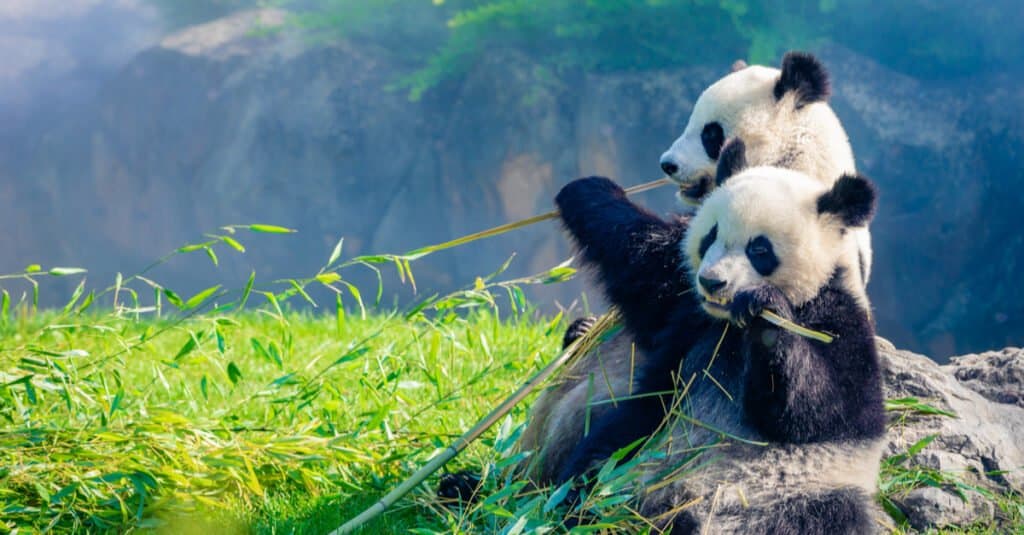
The giant panda moves between different elevations and eats different types of bamboo
©Daniel X D/Shutterstock.com
Giant pandas do not eat the same type of bamboo all year round. According to research, these bears alternate between at least two different types of bamboo found at different elevations. They begin the spring eating tender bamboo shoots found at lower elevations. Then they move to higher elevations in time for the shoots of another variety of bamboo to emerge. In the summer, they devour the calcium rich leaves of the higher elevation bamboo. Then by August they move back to lower elevations where leaves have plenty of calcium and other necessary nutrients for lactating mothers. By alternating between different elevations, giant pandas have a better chance to get enough bamboo to satisfy their nutritional needs.
Bamboo Is the Most Abundant Food Source for Pandas
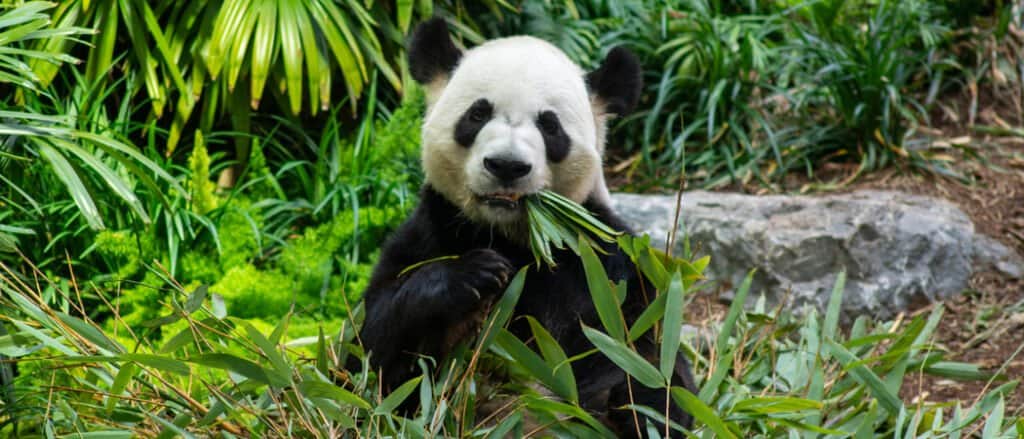
Giant pandas adapted to eat the most abundant source of food available to them.
©JWPhotoworks/Shutterstock.com
They likely did so because bamboo was the most abundant food source available at a time when food was scarce, and many species were under pressure. Eating bamboo requires lots of energy because the plant is tough and fibrous. Giant pandas can’t process the plant very well, either. They only fully digest a small percentage of what they eat. But hunting for prey also requires a lot of energy. Perhaps long ago, pandas faced a greater threat to survival hunting for scarce prey than simply eating the abundant bamboo that grew all around them. Those that adapted and could get enough bamboo to survive went on to reproduce and thrive.
Few Other Animals Eat Bamboo
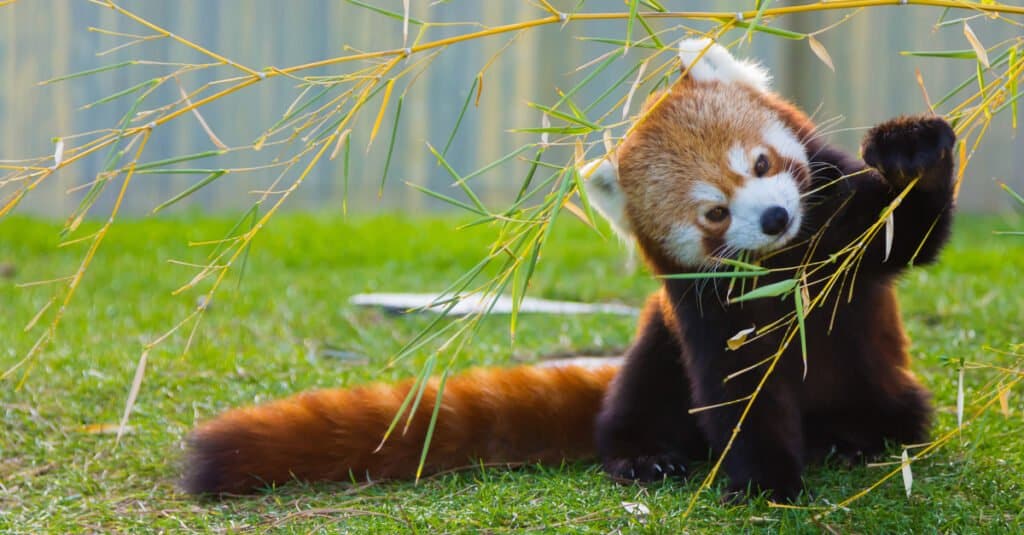
Red pandas are endangered and are slightly bigger than a domestic cat.
©Jose Angel Astor Rocha/Shutterstock.com
Giant pandas have probably stuck with their bamboo-based diet over time, in part, because few other animals eat bamboo. The red panda, Ailurus fulgens, though not a close relative of the giant panda, is one species that also eats primarily this tough and fibrous plant. However, red pandas pose little competition for giant pandas. As long as conservation efforts protect bamboo forests where giant pandas live, red pandas that share the same habitat can also get enough of this necessary plant to thrive.
Giant Pandas Do Not Have Guts Adapted to a Bamboo Diet
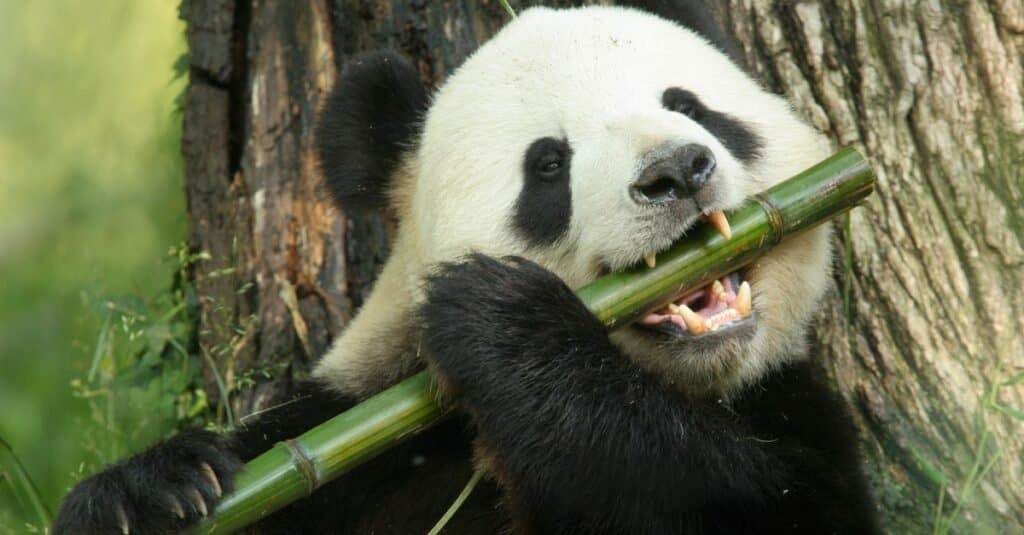
Giant pandas have features that help them eat bamboo, but their digestive system is not well adapted.
©Bryan Faust/Shutterstock.com
Giant pandas have some adaptations specific to eating bamboo, including large molars, a strong jaw, and a wrist bone that functions like a thumb. However, they still have the digestive system of a typical bear, geared toward an omnivorous or carnivorous diet. Most animals that eat the kind of high fiber, plant-based diet that pandas eat have digestive systems designed for processing that type of food. Cows and other ruminants, for instance, have multi-chambered stomachs that get as much nutrition as possible out of every bite of grass or hay. Most herbivores also have a gut biome with microorganisms that help to break down and digest tough, fibrous plants.
Giant pandas do not have either of these adaptations. Instead, they have the same sort of digestive system found in other bears. They have a simple stomach and a relatively short small intestine, and their gut flora doesn’t do much to help them break down plants at all. Scientists estimate that they only process approximately 17 percent of the bamboo that they eat. This really explains why giant pandas just can’t get enough bamboo.
The photo featured at the top of this post is © iStock.com/wrangel
Thank you for reading! Have some feedback for us? Contact the AZ Animals editorial team.





